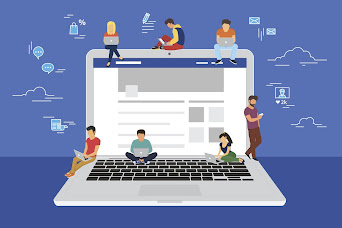The podcast I decided to study in relation to online communication was Social Pros; Keeping Social Real with Dr. Brian Boxer Wachler. Many points brought up in this podcast reflect what we have been learning in class, and were very interesting and informative. Their podcast as a whole, hosted by Anna Hrach and Daniel Lemin, focuses on all of the positive and innovative things coming out of social media, but the episode we are discussing today focuses more on the cons and the importance of using social media in a healthy way.
The guest being featured is Dr. Brian Boxer Wachler, an eye surgeon who blew up on the social media app Tik Tok for his medical-related content and stitches, racking up over 3 million followers and over 100 million likes. The start of this podcast discusses how Dr. Wachler gained such a massive following on social media, and how that has affected him. During covid like many others, Brian had found himself with a huge amount of downtime and quickly noticed the growing number of health-related videos circulating the app Tik Tok. This allowed him to reach a much wider audience than previously possible through a private practice or medical facility. This largely connects with our in-class learning and recent presentation on how social media affects interpersonal communication. Within the chapter "Communication and Technology" in our textbook I found the quote "Digital communication makes up most of the lives of youth today--whether it be mobile phones or social networking, the predominant current forms." (Green 210) This complements the previously mentioned piece of the podcast because it goes to show that social media really does act as an online community, full of insightful information and relationships just waiting to begin.Although that is something very positive, the podcast goes on to discuss the possible harmful effects of social media. The first big topic covered is fake news and information being spread across social platforms. Dr. Brian Boxer Wachler states: "there is a huge number of health-related videos that are going viral, with hundreds and thousands and millions of views, but the information is totally not accurate; it is wrong or even dangerous" (Hrach & Lemin, 2022, 4:59) Dr. Wachler's content mainly consists of discrediting inaccurate health claims, which is extremely helpful to the online community. In class, we also discussed fake news when we focused on how social media was used throughout the pandemic. When Covid sent us all into shutdown, social media usage rates increased drastically. Because of this, people were also exposed to more fake news and personalized feeds with biased information.Dr. Wachler explains how many social platforms' algorithms don't fact-check information, can become addictive, and a string of other harmful behaviors that are possibly taken away from social media. I loved listening to this podcast and highly recommend you all to go check it out if you are wanting to learn more! Down below I am including a link to one of Dr. Brian Boxer Wachler's Tik Tok videos:
https://www.tiktok.com/@brianboxerwachlermd/video/7098435324136705322?lang=en









